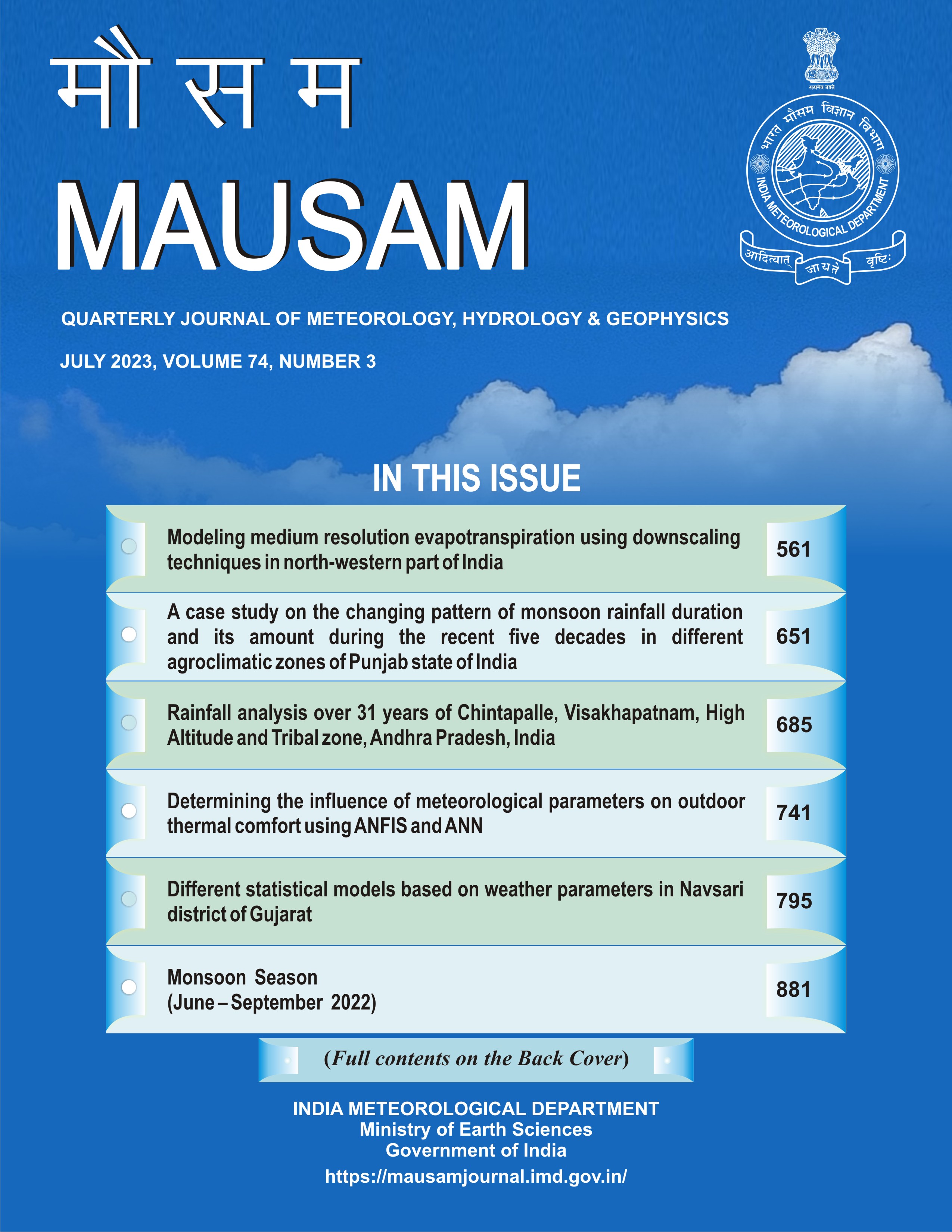Studies on the variation in concentrations of respirable suspended particulate matter (PM10), NO2 and SO2 in and around Nagpur
DOI:
https://doi.org/10.54302/mausam.v74i3.828Abstract
The objective of this study is to assess the long-term variation in concentrations of Respirable suspended particulate matter (PM10), sulphur dioxide (SO2) and nitrogen dioxide (NO2) in the ambient air of Nagpur (India) during 2011-2018. The pollution data during the above period at three locations, viz., residential (Station-I), industrial (Station-II), and commercial location (Station-III) has been analyzed. The highest daily average concentration of PM10 at residential, industrial, and commercial locations was found 154 microgm/m3, 199 microgm/m3, and 153 microgm/m3, whereas, the average annual concentration at these locations was found 101.87 microgm/m3, 115.37 microgm/m3 and 98.75 microgm/m3, respectively during the above period. The highest daily average concentration of SO2 was found at 18 microgm/m3, 22 microgm/m3 and 19 microgm/m3 and the average annual concentration was 13.25 microgm/m3, 13.5 microgm/m3, 13 microgm/m3 at respective locations. And the highest daily average concentration of NO2 was found 77 microgm/m3, 60 microgm/m3, 60 microgm/m3 and the annual average concentration was 44.125 microgm/m3, 41.825 microgm/m3 and 40.25 microgm/m3 at the respective locations. The exceedance factors for PM10 varied from 'moderate to high' at the residential and commercial locations and from 'high to moderate' at the industrial location. Planetary boundary layer height (PBLH) and ventilation coefficient (VC) were also estimated over the region for 2011-2018. The maximum PBLH and VC observed during the study period was in the summer season, and the minimum was in the post-monsoon season. Annual and Seasonal Air quality index analysis shows that the level of pollution was in the range of SATIFACTORY to MODERATE. A study of seasonal analysis of PM10, SO2 and NO2 showed that the higher concentrations were found in winter relative to summer with the least concentration occurring during the monsoon season. A regression analysis was performed to check PM10's interdependence with other contaminants. A positive association was found between PM10 and SO2 for all seasons. A negative association was found between PM10 and NO2 in summer for all the stations and winter at Station-I and Station-III. Similarly, the correlation between PM10 and meteorological parameters such as wind speed and temperature was found to be negative whereas it was positive for relative humidity.
Downloads
Published
How to Cite
Issue
Section
License
Copyright (c) 2023 MAUSAM

This work is licensed under a Creative Commons Attribution-NonCommercial 4.0 International License.
All articles published by MAUSAM are licensed under the Creative Commons Attribution 4.0 International License. This permits anyone.
Anyone is free:
- To Share - to copy, distribute and transmit the work
- To Remix - to adapt the work.
Under the following conditions:
- Share - copy and redistribute the material in any medium or format
- Adapt - remix, transform, and build upon the material for any purpose, even
commercially.



